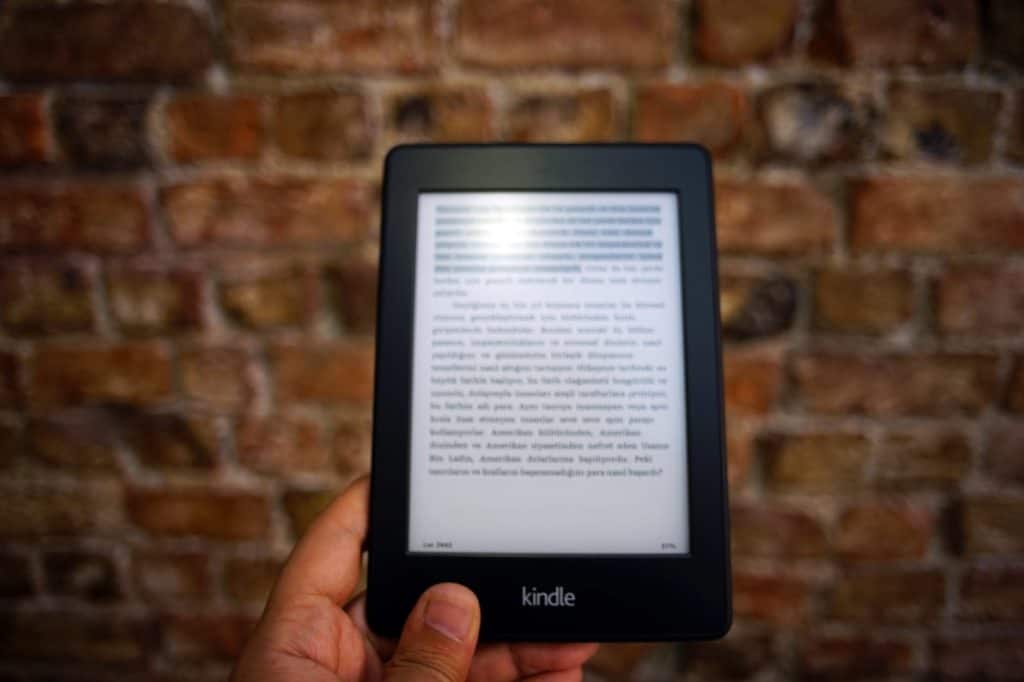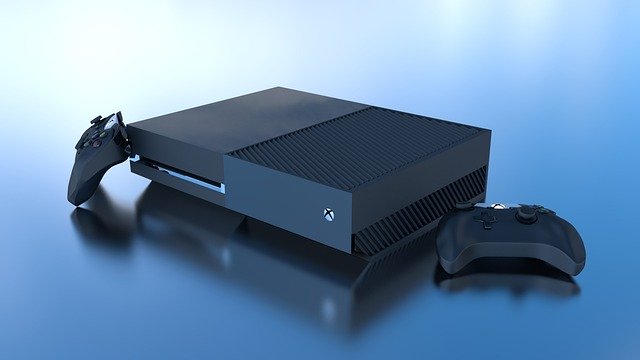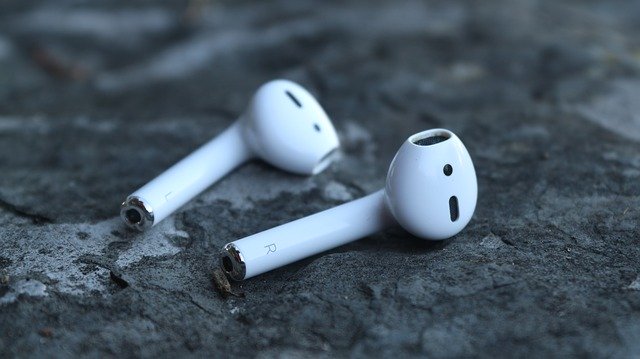
Have you ever used a kindle and wondered if it emits radiation?
So do Kindles emit EMF radiation? I have spent many hours of research to give you the best answer in this article.
The quick answer is
Yes. Amazon Kindle will emit low EMF radiation, especially radiofrequency radiation. A Kindle emits higher EMF radiation when connected to a Wi-Fi network. But will emit much lower radiation than a cell phone or smart meter.
Are you looking to see if they can be damaging to your health and to that of your loved ones?
In this article, we take a detailed look at Kindles, how they work, and if the radiation emitted by them is a potential health risk.
Electromagnetic radiation is emitted by everything that requires electricity to work. When electricity flows through a copper coil, it produces a magnetic field around it.
But for most appliances, it is so negligible that there is practically no harm. There is no need for you to worry over the EMF radiation your night bulb or ceiling fan produces because it is close to nothing.
However, there are several demanding appliances that produce EMF radiation that can harm us over continuous repeated exposure.
Let’s first look at a standard desktop computer.
If you work on a computer on your desk, you are constantly exposing yourself to high levels of electromagnetic radiation.
Sitting down, your head and upper body are at increased risk of EMF radiation since the machine is directly opposite from your upper torso.
However, your lower body gets affected since electromagnetic radiation (EMR) travels downwards.
The best way of safeguarding yourself from that radiation is to create as much distance as you can between you and the machine.
For example, if you are working on a desktop, position your chair as far away as possible while still remaining comfortable accessing the machine.
If working on a laptop, try and use it in battery mode as often as you can since working while being plugged in can cause the machine to generate some radiation which will then affect you.
For more on protecting yourself from laptop radiation, please give my other post a read, called Best EMF Radiation Protection For Laptops.
Also while working, it is a good idea not to rest your hands on the keyboard of your laptop. A lot of folks tend to let their hands rest either on the keyboards or the extra chin (the area around the touchpad) and it is dangerous since it puts you at a higher risk of electromagnetic radiation exposure.
The best option is to use external USB keyboards and mice since they don’t emit any radiation and are very safe.
Let’s be honest here: we cannot block out all electromagnetic radiation. Our goal is to minimize the exposure to the bare minimum without compromising on how we work.
There are plenty of people who use their laptops by placing them on their laps while traveling or otherwise. This is a deadly mistake since it ensures massive radiation exposure. To combat this get yourself an EMF Radiation Protection & Heat Shield.
Studies have been conducted and there is no research backing the fact that using laptops or Kindles on your lap can increase your chances of damaging your reproductive cells as well as other cells. Radiation can mutate cells which means they can turn malignant as well which is a terrible predicament.
What is true for desktops and laptops is also equally true and applicable to all types of portable computing devices including tablets, iPads, smartphones, and Kindles.
Here are 2 articles I have written about the radiation from the products above.
WiFi as radiation.
Back in the good old days, the only way of going online used to be by physically connecting your computer to your ISP’s modem with a wire. These days, wireless networks are everywhere.
Wires are considered old school and there is hardly anyone at home still using a wired connection unless they are total computer nerds.
But what people often miss is the increased levels of radiation exposure they are subjecting themselves to over some stupid wires.
I can’t emphasize this enough – chuck the wireless, go for the wired connection. I will tell you all you need in this article here called HardWiring Your Home Using Powerline Adapters.
Sure it wouldn’t be as cool and definitely not as convenient but it is smarter to use a wired connection instead of introducing a known carcinogen into your home environment.
Everyone these days depends on their wireless networks for the internet. Even if you find it hard to switch to a wired connection, it is good practice to shut off the WiFi before bed each night.
It is tedious and you might not always remember to do it which is why there are workarounds you can use.
There are plenty of cheap timers available on Amazon that will automate this function for you. I have this cool smart timer, it runs from an app on my phone. check it out on Amazon here.
I use the smart timer that shuts off my router at 23:00 and turns in back on again at 6 in the morning. This gives me a good 8 hours free of radiation which my body can use to repair the damage that radiation might have caused during the day.
You should also pay attention to your electronic devices and how they are configured to connect to your wireless network.
At any point that you’re not using a device such as your smartphone, make sure that their WiFi connectivity is turned off.
Keeping it turned on might be harmful since the phone will continuously emit radiation trying to find a wireless network to connect to and that can be damaging to you if exposed for a long time.
Kindles and its radiation effects.
There is one major issue that society has till now overlooked and that is how our brain deals with smart electronics.
We are quickly replacing our paper books with e-copies of it – reading them on our iPads and Kindles but there is a major need to stop and reflect on what it is that we are actually subjecting ourselves to.
There are several papers authored by esteemed neuroscientists who attest to the fact that reading on paper surfaces and reading on a glass screen are very different.
Over a trial conducted by faculty at Tufts University, the researchers found that the fundamental difference between reading something on paper and something on-screen is so wide that it lights up different parts of the brain.
More research is underway using MRIs and PET scans but what the preliminary data suggests is that the brain processes these two acts differently.
Try it yourself – try reading the same passage on paper and then on a screen. If you try out this experiment enough number of times, what you’ll find is that you have better information retention when you’re reading from paper.
But why is that? In my view, reading on paper is more effective because of the following three reasons:
- The brain processes the text quicker.
- It’s easier to store in memory.
- The brain can analyze the information better.
I’m not just saying this as a means of fueling my joy of flipping pages, or the smell of a new book. Heck, I’m not even saying it for my utter dislike of the multiple distracting ad links that keep popping up on my screen while I’m reading.
I’m saying this because it is quite evident from primary data that reading an actual printed paper is way better for our brains than reading a pixelated screen.
I make this argument to you while trying to comprehend the true essence of what encapsulates a pleasurable reading experience. Reading is supposed to be self-reflective.
Reading can be calming and a person reading usually drops their pulse and goes into a state of relaxation as they create a new world in their mind.
With screens, you can never quite achieve that because of the blue light screens typically emit.
Blue light is distracting and diminishes our span of attention which is terrible when you’re trying to read and assimilate information.
Working around this problem, Amazon Kindles comes without a backlight (which they call e-ink, sort of to imitate a real book) but even then you are at risk of radiation.
The technology train on this has already left the station and there is no going back but we must understand that by using these electronic mediums, we are actually doing more harm than good when it comes to establishing a perfect reading environment.
So how much radiation do Kindles emit?
Kindles are still electronic devices and as stated above, all electronic devices emit EMF radiation.
Kindles are powered by complicated circuitry which themselves emit some EMF radiation.
But that is no cause for alarm. A Kindle that is powered on will emit radiation but in a manner that is acceptable and harmless.
However, if you’re using it to constantly transfer data (in lieu of downloading new books, using other apps, etc.), it will emit more radiation and can be a cause for concern.
If you look at the Kindle manufacturing brochure that they include with each unit, they specify that the Kindles are compliant with the FCC emission limits.
But if you did a little digging you’d know it’s of little consolation since FCC doesn’t mandate how the emission should be measured to best protect the public.
The best advice here is to create a distance between you and the Kindle. Use it sparingly and when you do, try and maintain a distance of at least 10 inches.
You can also try EMF protection cases that are available on Amazon, I will tell you my favorites below.

This ought to limit your radiation exposure and make it easier for your body to heal radiation damage better.
What can I do to limit my radiation exposure?
The best way to limit your EMF exposure is to not use an electronic device to read at all.
But we all know that’s not going to happen so here I list out the most effective ways you can limit the exposure from your Kindles and other smart devices:


